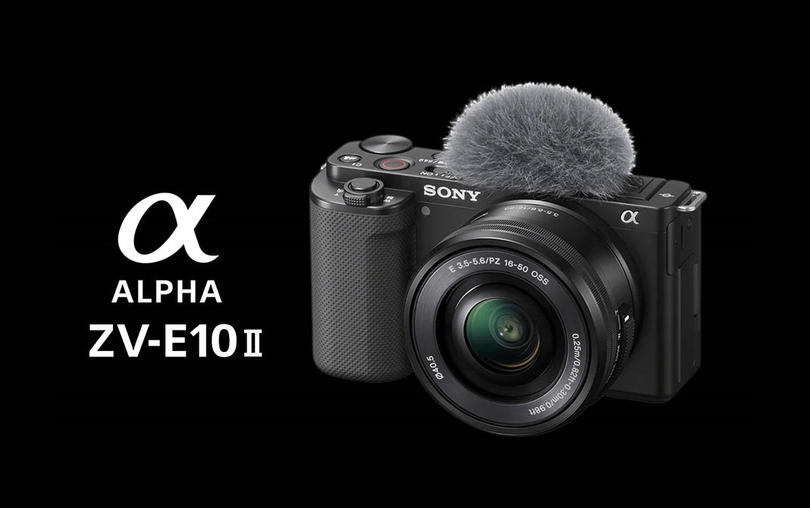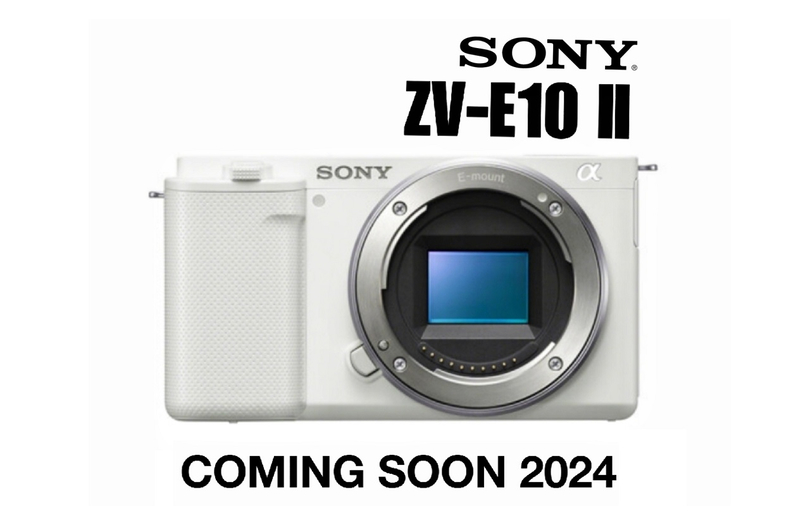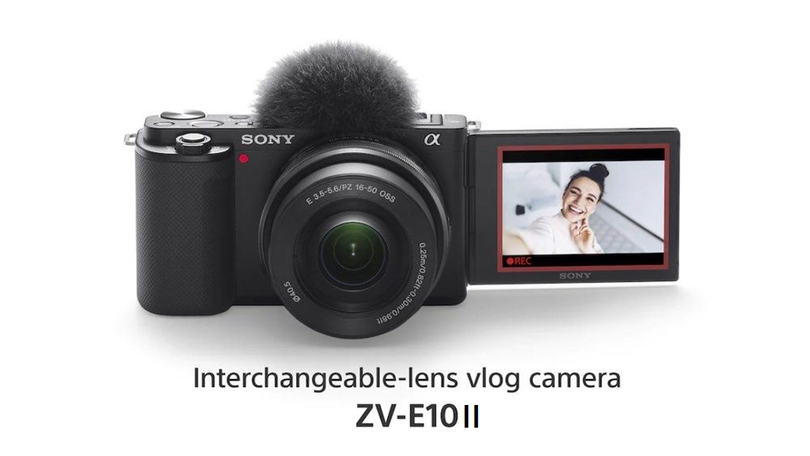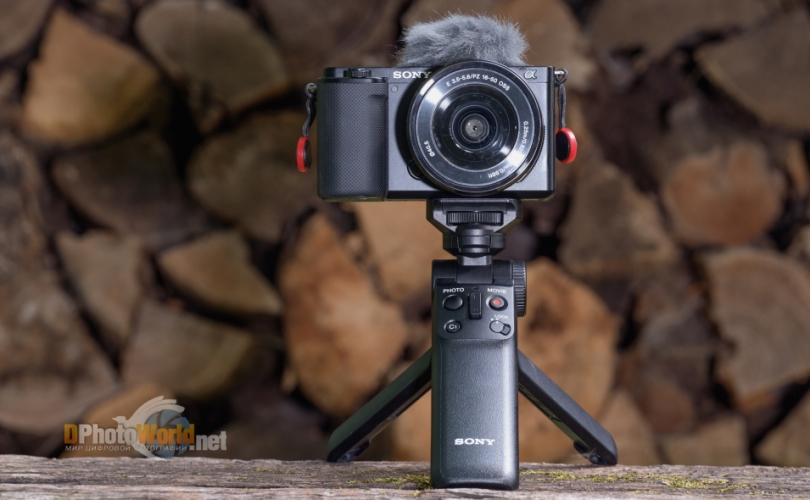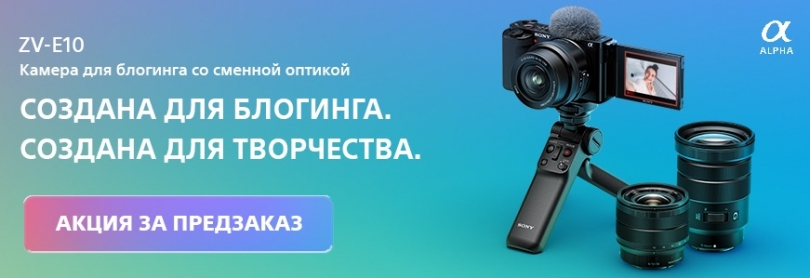
When you use DPReview links to buy products, the site may earn a commission. Sample galleryThis widget is not optimized for RSS feed readers. Please open this article's permalink in a browser to view this content.
Product photos: Richard Butler
The Sony ZV-E10 II is the company's second-generation APS-C vlogging ILC. It brings a new sensor and larger battery, along with improved video specs.
Key features:
26MP APS-C BSI CMOS sensor
Full-width 4K at up to 30p
4K/60p from a 1. 1x crop (5. 6K capture)
10-bit video capture
S-Cinetone color mode and 'Creative Look' options
Imports LUTs for previewing, embedding or applying to S-Log3 footage
Three-capsule mic with automatic directional focus option
No mechanical shutter
The Sony ZV-E10 II will be available from early August at a recommended price of $999 body-only or $1099 with an updated 16-50mm F3. 5-5. 6 OSS II retracting power zoom. These prices represent a $300 increase over the original version. The ZV-E10 II will be available in black or white. The white version will come with a silver version of the 16-50mm PZ that won't be sold separately.
Buy now:
$1098 w/ 16-50 at B&H Photo$1098 w/ 16-50 at AdoramaIndex:
What's new
How it compares
Body & handling
Initial impressions vlogging video
Specifications
Press Release
What's new
New sensor
The ZV-E10 II uses the same 26MP BSI CMOS sensor we've seen in the a6700 (and the pro-video FX-30). It's a much faster sensor than the one in the previous version of the camera, and is able to deliver 4K video at up to 60 frames a second, where the previous version had to crop-in to shoot at 30fps, meaning it showed significant rolling shutter in its 4K modes.
10-bit video
The ZV-E10 II also gains a newer processor, allowing the camera to capture 10-bit video. This allows it to record Log footage with plenty of precision, which allows greater flexibility when grading color and tone. It also means the camera can capture true HDR footage for playback on HDR phones and TVs.
All the camera's 4K modes are taken from oversampled capture: 6K for modes up to 30p and 5. 6K (with a 1. 1x crop) for the 50 and 60p modes. There's no in-body stabilization in the camera, so digital stabilization applies a further 1. 33x crop, meaning the 16-50mm kit lens ends up giving a 32mm equiv field of view, at its widest, if you want to use more than just the lenses' optical shake correction, and 35mm equiv in the high framerate modes.
Updated features
The ZV-E10 II has the newer Bionz XR processor, rather than the 'X' of its predecessor. As part of this update it gains a UHS-II compatible SD card slot.
The ZV-E10 II doesn't include Sony's 'AI processing unit' but includes some of the latest subject-recognition algorithms, we're told. It also gains the focus breathing compensation function that, with recognized Sony lenses, crops in to the narrowest effective field of view then progressively adjusts the crop and scaling to maintain consistent framing as the focus distance changes.
The ZV-E10 II also has the CineVlog mode from the ZV-1 Mark II, which gives a widescreen 2. 35:1 look with black bars top and bottom and shoots at 24p. Onto this various 'Looks' and 'Moods' can be applied, to give a stylized appearance to your footage.
There's no sign of Sony's Auto Framing modes, though, so you can't set the camera on a tripod and let it crop-in and follow your subject around the scene, nor set a subject's position in the frame and have it crop to maintain that positioning, as you're filming yourself at arm's length.
Larger battery
The ZV-E10 II now uses Sony's larger NP-FZ100 battery, allowing it to record for much longer. Sony did not disclose battery figures prior to launch, but the FZ100 has always made cameras much more usable than the smaller FZ50 used by the original ZV-E10.
Updated kit zoom
The ZV-E10 II typically comes bundled with the Sony E PZ 16-50mm F3. 5-5. 6 OSS II, a refreshed version of its compact, retractable power zoom. The version II gains the ability to focus while zooming, helping to keep your subject in focus if you change the focal length while recording, and also communicates information to help the camera's stabilization efforts.
In principle, the lens can focus fast enough to work with 120fps shooting, in the unlikely event anyone ever attaches it to an a9 III. However, Sony has not made any changes to the optical design of the lens, which we've never been particularly impressed by.
How it compares
We've chosen to compare the ZV-E10 II to its predecessor, Nikon's Z30 that aims to offer something very similar, and to the a6700, to see what differences exist between Sony's vlogging model and its enthusiast stills/video option. The other obvious competitor in this space is Panasonic's DC-G100, which again offers a clever mic setup and front-facing screen for vlogging. However, its substantial crop in 4K mode makes it less well suited to high-res vlogging than the other cameras listed here, so that's the one we've omitted for reasons of space in the comparison table.
Sony ZV-E10 II
Nikon Z30
Sony ZV-E10
Sony a6700
MSRP
$1099 w/ 16-50mm OSS II
$849 w/ 16-50mm VR
$799 w/ 16-50mm OSS
$1499 w/ 16-50mm OSS
Resolution
26MP
21MP
24MP
26MP
Mech shutter
No
Yes
Yes
Yes
Image stabilization
Digital only
Digital only
Digital only
IBIS rated to 5. 0 EV
4K video rates
(crop factor)
UHD/60 (1. 1x)
UHD/30
UHD/24
UHD/30
UHD/24
UHD/30 (1. 23x)
UHD/24
UHD/120 (1. 58x)
UHD/60 full-width
UHD/30 full-width
Video bit-depth
10-bit
8-bit
8-bit
10-bit
Rear screen
1. 04M dots fully articulated
1. 04M dots fully articulated
0. 92M dots fully articulated
1. 04M dots fully articulated
Viewfinder
None
None
None
2. 36M dot
0. 7x mag
Number of dials
1 main, 1 rear
2 main
1 main, 1 rear
2 main, 1 rear
Mic / Headphone sockets
Yes / Yes
Yes / No
Yes / Yes
Yes / Yes
USB
3. 2 Gen 1 (5Gbps)
3. 2 Gen 1 (5Gbps)
3. 2 Gen 1 (5Gbps)
3. 2 Gen 2 (10Gbps)
SD slots
1x UHS II (side)
1x UHS-I (base)
1x UHS-I (side)
1x UHS-II (side)
Video battery life, CIPA, min
Cont. / Actual
195 / 130
85 /
125 / 80
185 / 100
Dimensions
121 x 68 x 54mm
128 x 74 x 60mm
115 x 64 x 45mm
122 x 69 x 75mm
Weight
377g
405g
343g
493g
Perhaps the biggest benefit of the ZV-E10 II over the original is the faster readout of its sensor. The mark 1 exhibited a lot of rolling shutter in 4K/24 mode and had to crop in to deliver 4K/30; by contrast, the new camera can shoot at 4K/60 using most of the sensor, meaning it's over twice as quick as its predecessor.
It's worth noting the differences, compared with the more expensive a6700, too. The a6700 has a viewfinder, in-body stabilization, twin control dials on its top plate and a mechanical shutter, and is able to shoot 4K/120 if you can live with a substantial 1. 58x crop. These are all omitted from the less expensive, more influencer-focused ZV-E10 II.
Body and handling
The ZV-E10 II's body is impressively small: it looks like an early Sony NEX model and is recognizably more compact than the a6700.
The downside of this is that the controls and operation also feel more like an NEX model, rather than one of Sony's latest cameras, if you attempt to shoot stills with it. Unlike the twin dial a6700, there's only a single top-plate dial on the ZV-E10 II and an awkward, fiddly rear-face dial that we've been trying to avoid having to use on Sony cameras for more than a decade, now.
The interface is primarily touchscreen-based, allowing direct operation while you're holding the camera to face you. There are also dedicated buttons both for Bokeh mode (which opens the aperture up to a value that can be adjusted in the menu) and Product Showcase mode that tells the camera to prioritize nearby objects over face detection. Both buttons can be customized to perform other functions, if you prefer.
The ZV-E10 II is the first Sony to rotate its interface display when you rotate the camera, to make vertical video capture easier.
The ZV-E10 II has both headphone and mic sockets, along with a 5Gbps USB-C port that can be used to stream up to 4K/30 video when acting as a webcam. There's also a micro HDMI slot.
We didn't find the ZV-E10 II the easiest camera to hold, if we were facing towards it, to vlog, so we suspect the optional vlogging handle/table tripod with its Bluetooth-connected controls, will be really valuable. Trying to hold the camera at arm's length without it just meant constantly nudging the zoom rocker on the lens and not being able to reverse the effect without stopping recording and bringing the camera back into two hands to push the zoom back out to wide-angle.
Battery
The use of the larger NP-FZ100 battery sees the battery life rating jump from the 440 shot-per-charge rating of its predecessor to 610 shots, using the standard CIPA testing methods. As always, these numbers underestimate the number of shots many people get, so double this number is entirely plausible.
For a vlogging camera, we'll also quote the CIPA video figures, which are 195 minutes of recording if just left to run (assuming you don't run out of card space or overheat before then), and 130 minutes using the CIPA "Actual" shooting duration test, which involves more stop/start recording, zooming of the lens and turning the camera on and off. Both are based on FullHD capture, not 4K.
The a6700 tends to overheat relatively quickly in its higher frame-rate 4K modes, so we'll have to test the small, uncooled ZV-E10 II more once we get a production unit.
Initial impressions vlog
Rather than write my impressions of the ZV-E10 II, I used it as intended: vlogging my thoughts to camera. All sound was captured using the camera's internal mics.
Buy now:
$1098 w/ 16-50 at B&H Photo$1098 w/ 16-50 at Adorama. dpreview.com2024-7-13 17:00


